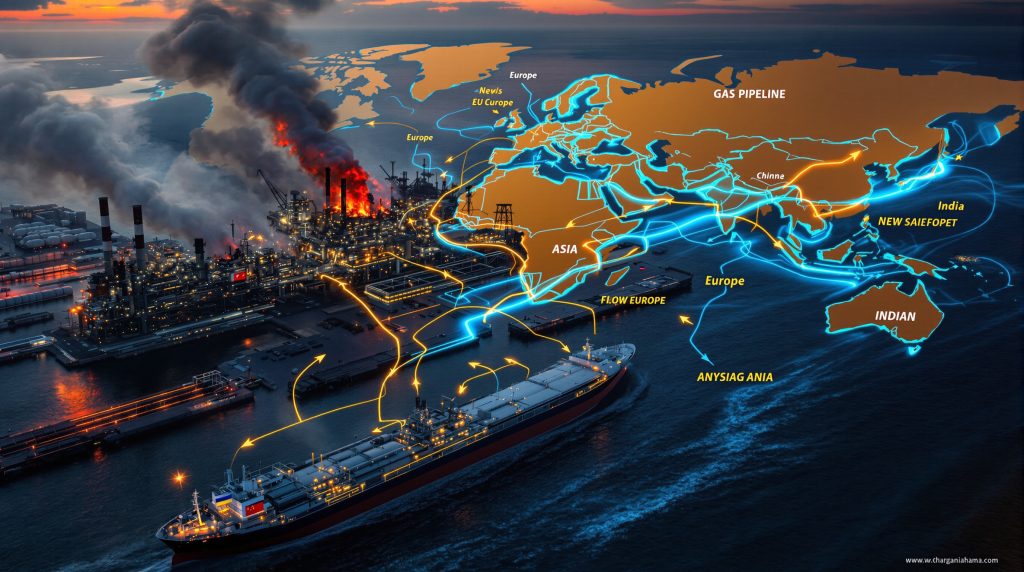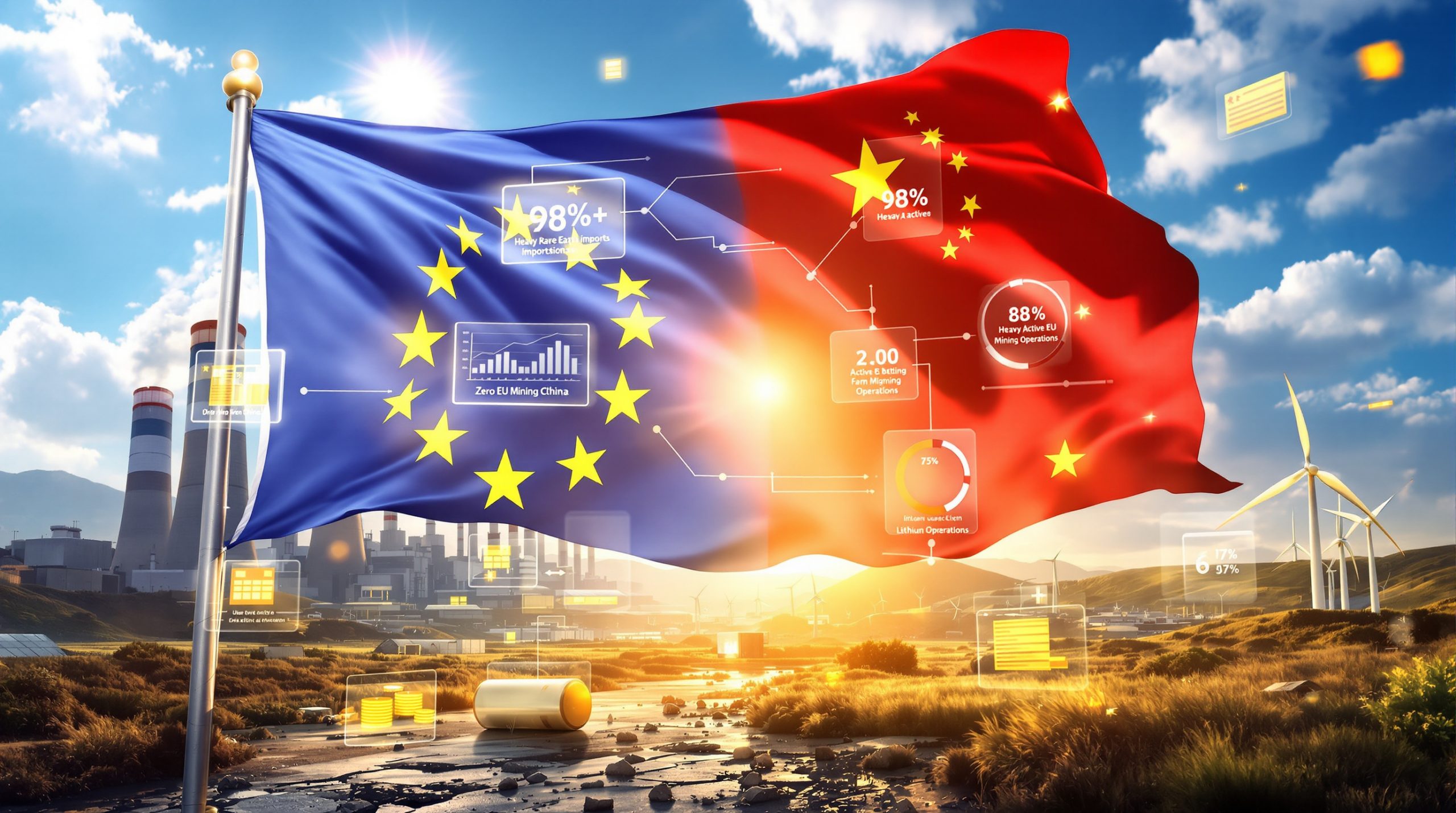How the Ukraine Conflict Disrupted Russian Gas Export Routes
The conflict in Ukraine has fundamentally transformed Russia's natural gas export infrastructure, creating one of the most significant shifts in global energy markets in recent years. Strategic rerouting of gas flows, driven by geopolitical tensions and direct attacks on key facilities, has reshaped trade patterns and challenged Russia's position as a dominant energy supplier.
The Ust-Luga Incident: Catalyst for Export Disruption
What happened at the Ust-Luga facility?
On August 24, 2025, a Ukrainian drone strike targeted Novatek's Ust-Luga gas condensate complex on Russia's Baltic coast. The attack ignited a fire that initially halted all operations at this critical facility. While partial operations resumed within days, two of the facility's three processing units remain offline as of mid-September, severely limiting its processing capabilities.
The attack represented a significant escalation in Ukraine's strategy of targeting Russian energy infrastructure, directly impacting one of Russia's key gas export terminals. This facility normally processes gas condensate into various higher-value petroleum products.
How extensive was the damage?
The drone strike crippled the facility's ability to process gas condensate into value-added products including:
- Light and heavy naphtha
- Jet fuel
- Fuel oil
- Gasoil
This processing constraint has forced Novatek to revert to exporting raw gas condensate rather than refined products. The shift from exporting refined products to raw condensate significantly impacts profitability, as refined products typically command premium prices in international markets.
Industry experts note that the timing of the attack was particularly problematic, coming during a period of already strained global supply chains and market volatility insights. Analysts from energy consultancy firms estimate the damage could take 6-8 months to fully repair, assuming no further attacks and availability of necessary equipment despite international sanctions.
Emergency Rerouting Operations
The disruption at Ust-Luga prompted Novatek to implement emergency contingency plans, redirecting gas condensate exports through alternative routes. According to Reuters reporting from September 18, 2025, approximately 70,000 metric tons of gas condensate were redirected to the Black Sea port of Novorossiisk.
On September 16, 2025, a vessel named Tataki departed Novorossiisk with a 140,000-tonne cargo, half of which consisted of the redirected condensate. This shipment was reportedly blended with crude from CenGeo and exported under the Siberian Light grade classification. The vessel was observed heading toward the Suez Canal, with industry observers speculating India as the possible destination.
This rapid rerouting demonstrates Russia's flexibility in product categorization and export infrastructure, though it comes with logistical challenges and increased transportation costs. The longer shipping route from Novorossiisk to Asian markets adds significant time and expense compared to Baltic Sea export terminals.
Broader Pattern of Infrastructure Targeting
The Ust-Luga attack represents part of a broader Ukrainian strategy targeting Russian energy infrastructure. Throughout 2025, Ukraine has increasingly focused on disrupting Russia's ability to generate revenue from energy exports, which remain crucial to funding its military operations.
Other notable infrastructure targets have included:
- Primorsk Port: Russia's largest oil-loading terminal suffered damage from drone strikes earlier in 2025
- Kirishi Refinery: One of Russia's major refineries was temporarily incapacitated by strikes
- Multiple processing facilities across Russia's western regions
These coordinated attacks appear designed to create maximum economic pressure on Russia by targeting revenue streams rather than military assets directly. By focusing on energy infrastructure, Ukraine aims to impact Russia's ability to fund its military operations while avoiding direct confrontation with Russian forces.
International security analysts suggest this strategy represents a significant evolution in modern warfare, with economic infrastructure becoming as strategically important as traditional military targets.
The Pivot to Asian Markets
Russia has dramatically reoriented its gas export strategy in response to both Western sanctions and infrastructure vulnerabilities. This eastward pivot reflects both necessity and strategic calculation as Russia seeks more reliable markets for its energy resources.
Prior to the conflict, Russia's natural gas exports were heavily oriented toward European markets. However, sanctions, political tensions, and now direct infrastructure targeting have accelerated a significant reorientation toward Asian markets, particularly China and India.
While specific current export distribution percentages require verification from official sources, energy market analysts have documented a significant shift from Europe to Asia. This pivot has been facilitated by:
- Pipeline Expansion: Increased capacity through the Power of Siberia 1 pipeline to China
- Development Plans: Acceleration of Power of Siberia 2 project
- LNG Terminal Investment: Enhanced capacity at ports less vulnerable to drone strikes
- Maritime Route Diversification: Greater utilization of eastern ports for liquefied natural gas exports
This eastward shift represents one of the most consequential geopolitical energy developments of the decade, with lasting implications for global gas markets and international relations.
Economic Implications of Export Disruption
The forced rerouting of Russian gas exports rerouting due to drone strikes carries significant economic consequences for Russia's energy sector. Industry analysts highlight several key financial impacts:
- Higher Transportation Costs: The shift from Baltic to Black Sea ports increases shipping distances by thousands of kilometers for deliveries to Asian markets
- Reduced Processing Margins: Exporting raw condensate instead of refined products substantially lowers profit margins
- Infrastructure Investment Requirements: New export routes require substantial capital expenditure at a time when Russia faces financial constraints
- Insurance and Shipping Premiums: Higher insurance costs for vessels carrying Russian energy products through conflict zones
These factors combine to create significant pressure on Russia's energy export revenues. The disruptions have also contributed to price volatility in global gas markets, with regional price disparities increasing as supply chains adjust to the new reality.
At 2:19 p.m. ET on September 18, 2025, global oil benchmark Brent crude was trading down 0.78% at $67.42, while the U.S. benchmark West Texas Intermediate was down 0.73% at $63.58, according to market data from Oilprice.com. These modest price movements suggest markets had already partially priced in the disruptions.
Logistical Challenges of Rerouting
The redirection of gas exports presents numerous logistical challenges that limit Russia's ability to maintain pre-conflict export volumes. Key constraints include:
- Port Capacity Constraints: Alternative ports like Novorossiisk have limited capacity for handling increased volumes
- Transportation Infrastructure: Pipeline networks weren't designed for current flow patterns
- Product Specification Issues: Different markets have varying quality requirements, necessitating blending and adjustments
- Vessel Availability: Sanctions have limited Russia's access to international shipping
- Insurance Complications: Many insurers won't cover Russian energy shipments
The complexity of rerouting massive volumes of natural gas through alternative infrastructure creates bottlenecks that cannot be quickly resolved. Physical infrastructure limitations, combined with financial and regulatory barriers, create significant obstacles to maintaining export volumes.
Energy logistics experts note that while Russia has demonstrated remarkable adaptability, the cumulative effect of these constraints inevitably reduces total export capacity.
Impact on Global Gas Markets
The disruption of Russian gas export routes has created ripple effects throughout global markets, influencing prices, trade patterns, and investment decisions.
Key market impacts include:
- Regional Price Disparities: European gas prices have shown greater sensitivity to supply disruptions than Asian markets
- LNG Demand Surge: Countries previously dependent on Russian pipeline gas have increased LNG imports from alternative suppliers
- Infrastructure Investment: Accelerated development of alternative supply routes and import facilities
- Contract Restructuring: Long-term gas contracts increasingly include supply disruption clauses and flexibility provisions
Market participants have adapted by diversifying supply sources and building greater flexibility into purchasing strategies. European buyers have accelerated investments in regasification terminals and pipeline interconnections, while Asian buyers have sought longer-term supply agreements with a broader range of providers.
These changes are reshaping global gas trade flows in ways that will persist long after the current conflict ends, creating a more diversified but potentially more expensive global gas market.
Future of Russian Gas Export Routes
Russia is implementing several strategic adjustments to its gas export infrastructure to address vulnerabilities exposed by the current conflict:
- Hardening Critical Infrastructure: Enhanced physical and cyber protection for remaining export facilities
- Diversifying Export Points: Reducing reliance on any single export terminal
- Domestic Processing Expansion: Building redundancy in condensate processing capacity
- Maritime Transport Investment: Expanding Russia's own tanker fleet to reduce dependence on international shipping
- New Pipeline Development: Accelerating eastern pipeline projects to secure Asian market access
These adaptations suggest Russia anticipates continued targeting of its energy export infrastructure and is preparing accordingly. The significant investments required for these adaptations come at a challenging time for Russia's economy, forcing difficult trade-offs between military spending and infrastructure investment.
Energy security experts note that these changes reflect a fundamental reassessment of vulnerabilities in Russia's energy export system, with implications that will shape investment decisions for decades to come.
Geopolitical Dimensions of Export Rerouting
The forced rerouting of Russian gas exports has significant geopolitical implications, reshaping relationships between major powers and altering regional dynamics.
Key geopolitical impacts include:
- Russia-China Energy Partnership: Deepening cooperation as China becomes an increasingly dominant market for Russian gas
- India's Strategic Position: Emerging as a key beneficiary of discounted Russian energy exports
- Central Asian Dynamics: Increased competition as Russia seeks alternative export routes through neighboring states
- Middle East Engagement: Growing Russian interest in coordination with Qatar and other gas exporters
Under the Trump administration, U.S. policy toward these shifting energy relationships has emphasized energy independence while maintaining a pragmatic approach to global energy security factors. The administration has focused on increasing U.S. LNG exports to Europe while avoiding direct confrontation over third-country energy relationships.
These shifting relationships reflect the broader geopolitical realignment triggered by the Ukraine conflict, with energy trade serving as both a cause and consequence of changing international alignments.
Environmental and Climate Considerations
The disruption and rerouting of Russian gas exports carries several environmental consequences that merit consideration:
- Increased Emissions: Longer transportation routes result in higher carbon footprints per unit delivered
- Methane Leakage Risk: Damaged infrastructure and hasty rerouting increases the risk of methane leaks
- Flaring Increases: Processing constraints have led to increased gas flaring at production sites
- Coal Substitution: Some European markets have temporarily increased coal usage due to gas supply concerns
- Renewable Acceleration: The uncertainty has accelerated renewable energy investments in import-dependent regions
Environmental specialists point out that while natural gas is often viewed as a transition fuel with lower emissions than coal, the disruptions to normal transportation and processing infrastructure can significantly increase its lifecycle emissions.
The conflict has thus created contradictory environmental pressures – accelerating renewable energy investments in some regions while increasing reliance on higher-emission fuels in others.
FAQ: Russian Gas Export Rerouting
Is Russia able to maintain its pre-conflict export volumes?
No. Despite successful rerouting efforts, Russia's gas export infrastructure was optimized for European markets through western export routes. The logistical constraints of redirecting these volumes through alternative routes, combined with processing limitations and market access issues, have inevitably reduced total export capacity.
Which countries are benefiting from redirected Russian gas exports?
China and India have emerged as the primary beneficiaries, securing increased volumes at advantageous prices. Several smaller Asian economies have also opportunistically increased Russian gas imports, taking advantage of discounted prices. These countries have maintained a neutral stance on the conflict, prioritizing energy security and economic interests.
How long will repairs at Ust-Luga take?
Industry analysts project that full restoration of the Ust-Luga processing capacity will take 6-8 months, assuming no further attacks and availability of necessary equipment. However, international sanctions complicate procurement of specialized equipment and technical expertise, potentially extending the timeline further.
Could Russia completely lose access to European markets?
While European imports of Russian gas have declined dramatically, complete elimination appears unlikely in the near term. Several Central and Eastern European countries maintain some level of dependence on Russian supplies due to infrastructure constraints and economic considerations. However, the long-term trend points toward continued reduction of European reliance on Russian gas.
What role does LNG play in Russia's export rerouting strategy?
LNG has become increasingly important as it offers greater flexibility in reaching distant markets. Russia has accelerated investment in LNG facilities less vulnerable to drone attacks, particularly in its Far East region. The ability to liquefy natural gas and transport it via ship rather than pipeline provides strategic flexibility that has proven valuable in the current conflict.
Conclusion: The New Reality of Russian Gas Exports
The Ukrainian drone campaign targeting Russian energy infrastructure has forced a fundamental restructuring of Russia's gas export network. What began as temporary disruptions has evolved into a strategic reorientation, with lasting implications for global energy markets.
The rerouting of exports from Baltic facilities like Ust-Luga to Black Sea ports represents not merely a tactical adjustment but part of a broader eastward pivot in Russian energy strategy. This shift carries significant economic costs for Russia while creating both challenges and opportunities for importing nations.
As the conflict continues, the resilience of Russia's adapted export routes will be tested, with implications extending far beyond the energy sector into geopolitics, international relations, and global climate efforts. The situation highlights the growing intersection of energy security, geopolitical competition, and infrastructure vulnerability in the modern world.
Energy markets will continue adapting to this new reality, with implications for prices, investment patterns, and LNG export dynamics that will persist long after the current crisis resolves. Furthermore, the trade war implications between major powers continue to influence how Russian energy exports are received in different markets. The transformation of Russian gas export routes may ultimately be remembered as one of the most significant and lasting economic consequences of the Ukraine conflict.
Want to Catch the Next Big Mineral Discovery?
Discovery Alert's proprietary Discovery IQ model instantly identifies high-potential ASX mineral announcements, transforming complex data into actionable investment opportunities. Explore how historic discoveries have generated extraordinary returns by visiting our dedicated discoveries page and position yourself ahead of the market.




